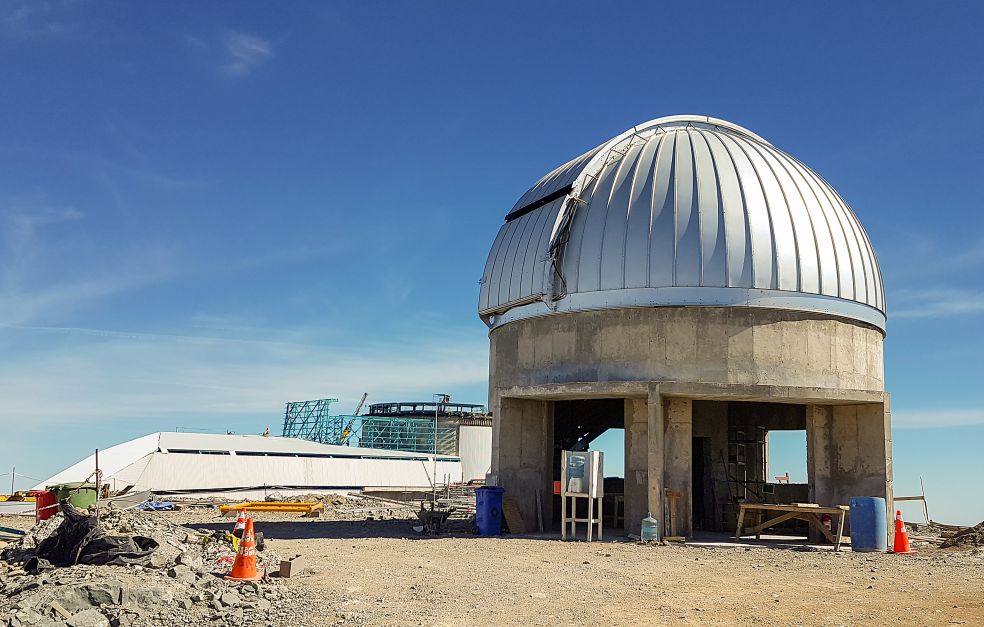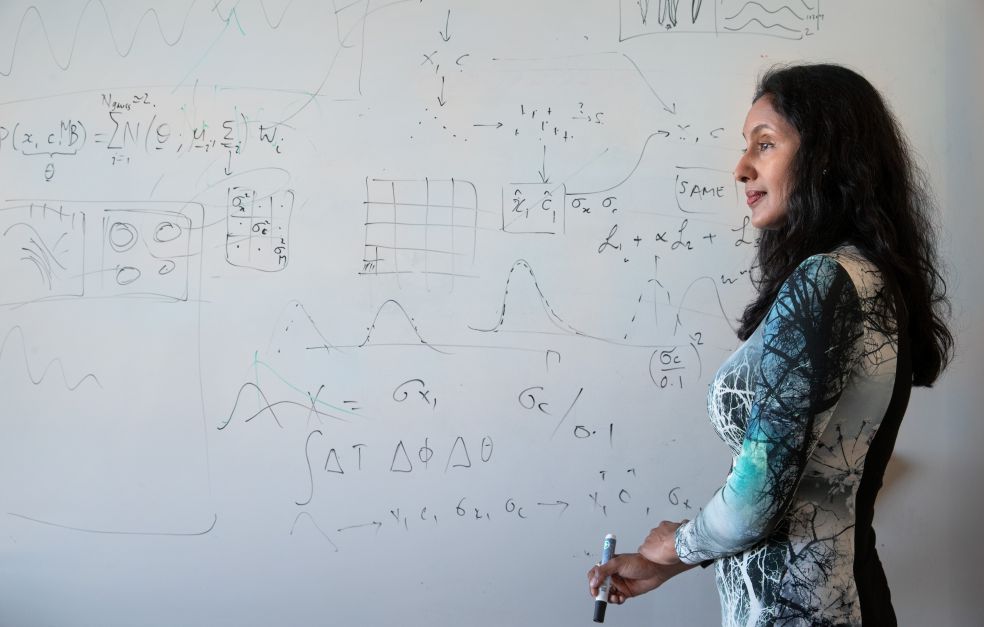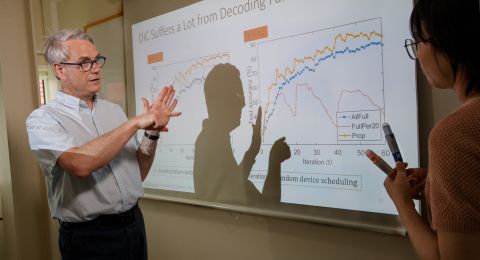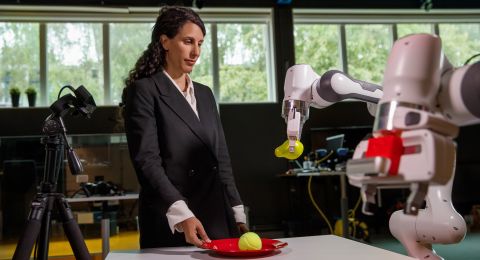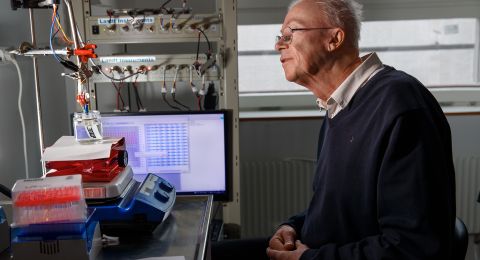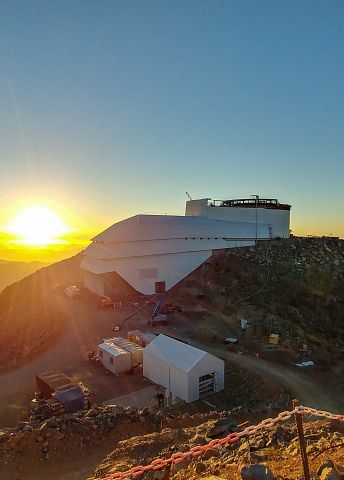
Project Grant 2018
Understanding the Dynamic Universe
Principal investigator:
Professor Hiranya Peiris
Co-investigators:
Stockholm University
Ariel Goobar
Matthew Hayes
Jens Jasche
Jesper Sollerman
Institution:
Stockholm University
Grant in SEK:
SEK 37,800,000 over five years
Einstein called it “his biggest blunder” when in 1917, after much hesitation, he inserted a term called “the cosmological constant” into his theory of general relativity to force the equations to predict a static universe, in keeping with physicists’ thinking at the time. Without the constant, his calculations had instead shown that heavenly bodies must be in constant motion.
We now know the universe is not only expanding; it is expanding at an accelerating pace. But nobody knows what the rate of acceleration is. Hiranya Peiris’ work will take us a step closer to an answer.
“There is much speculation, including the concept of a ‘multiverse’, but no consensus. Now we have the opportunity to understand and measure this phenomenon more accurately. We will get closer to understanding by establishing facts in a new way,” says Peiris.
An astronomical project
The Large Synoptic Survey Telescope (LSST) in Chile is the tool being used to improve our understanding. It is the largest global astronomy project to date, with a construction budget of one billion dollars. Planning began in 2012, and Peiris has been involved in the project since 2013.
“LSST enables us to look at our universe in a way not previously possible. We’ve gone from static images to monitoring changes over time. We’ll be able to see how galaxies form, and also study other short-lived light phenomena,” she says.
The project has engaged hundreds of researchers from 23 countries. Sweden is also taking part – thanks to a project grant from Knut and Alice Wallenberg Foundation.
“It’s the most exciting project in astronomy at present, and with the help of funding from the Foundation, we will be able to lead parts of the extensive work involved.”
Work on building the observatory began in 2014, and it will not begin delivering live research data until 2022–2023. The telescope’s camera, which is as big as a car, with a resolution of just over three billion pixels, will then start to scan the heavens.
Each scan takes about three days, and several terabytes of data are produced every 24 hours. The data are then sent to a data center in the U.S., which processes the information to make it more manageable. After that, it can be downloaded by the researchers in Stockholm, who transform the raw data into new insights on the birth of the universe.
The researchers are pursuing three lines of inquiry. The first aims to increase our understanding of dark matter and dark energy – the invisible matter that scientists believe makes up almost 85 percent of the universe.
“We’re going to draw the biggest map ever, showing where dark matter is found, all in relation to galaxies, which may give us a better understanding of the origin of the universe,” she says.
The second goal is to achieve better mapping of the least luminous galaxies, to learn more about how they form. Lastly, they are looking for new sources of gravitational waves, which are a form of ripples in space–time, caused by violent processes in the universe, such as when two black holes collide. More facts about gravitational waves will contribute to knowledge about the accelerating expansion of the universe.
Fireworks amid the stars
Although the sky at night may appear to be a tranquil place, there is a non-stop firework display going on. Every night the observatory at the summit of Cerro Pachón mountain in Chile records about ten million short-lived phenomena, invisible to the naked eye. This series of events will be analyzed at Stockholm University using machine-learning algorithms to find deviations from known phenomena.
When a deviation is detected in the lab, Professor Jesper Sollerman is alerted. He will then target the area pinpointed by LSST with other telescopes to take a closer look..
“We often don’t have much time – these phenomena can disappear within a day or so,” Peiris explains.
When the telescope has taken additional images, they are distributed to a wider group of researchers for analysis. Peiris believes that only by working together will they be able to make progress:
“This is real detective work, in which we follow up clues left behind by the universe as we seek to explain its mysterious origins and evolution.”
There is no live research data yet, so the research team is building simulation models on which to fine-tune their algorithms, especially the one that will be used to detect hitherto undiscovered phenomena. This is an incredibly difficult task, which Peiris likens to searching through Twitter for a certain key word without knowing how it is spelt or which language it is written in.
In 2016 she was appointed Director of the Oskar Klein Centre. She stresses the importance of involvement in LSST:
“The project gives us a unique opportunity to intensify our interdisciplinary collaboration. LSST will provide us with information to analyze for several decades to come. Many people will be involved in bringing this legacy to fruition.”
Text Magnus Trogen Pahlén
Translation Maxwell Arding
Photo Magnus Bergström

